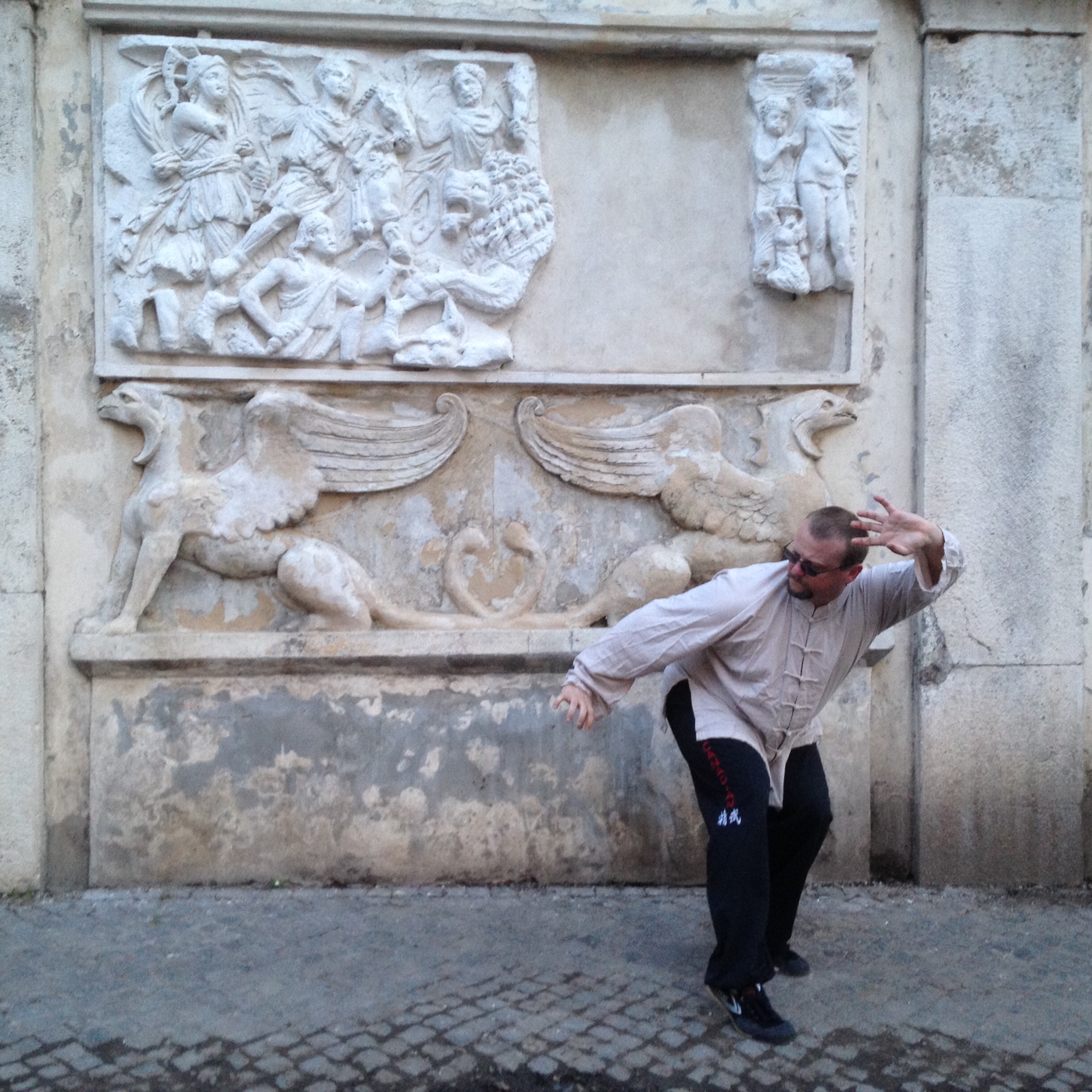Qigong & Health practices
Qigong and Health Practices: The Forgotten Side of Martial Arts
In martial arts circles, you hear the same phrases over and over.
Discipline. Strength. Combat.
Less often, you hear words like health, rejuvenation, or balance.
That’s a mistake.
Martial arts were never meant to be just fighting. The traditional systems—whether it’s Drunken Boxing, Shaolin Lohan, or classical Longfist—have always included internal health practices. They were designed to keep practitioners functional over a lifetime, not just in their twenties.
If you’re looking to train in a traditional system, or you’re just interested in why so many martial arts schools have breathing exercises and standing meditations, it helps to understand the role of qigong and other health methods. They aren’t extra. They are the foundation that everything else rests on.
This article will explain what qigong is, how it connects to martial training, and why you should never ignore this side of your practice. I’ll give you examples from Drunken Boxing, Shaolin Lohan methods, and a few others I’ve studied or taught.
If you have questions by the end, I encourage you to reach out. I’m always glad to clarify or help you get started.
What is Qigong?
First, let’s define the term without mystification.
Qigong (氣功) literally means “energy skill” or “energy work.” In practice, it refers to coordinated movement, breathing, and mind focus to strengthen the body, calm the nervous system, and improve circulation.
You don’t have to believe in metaphysical ideas to get benefits. Many of the positive effects come from the simple combination of:
- Controlled breathing
- Relaxed but structured posture
- Slow, deliberate motion
- Regular repetition
Studies have shown that qigong improves flexibility, lowers stress, and supports cardiovascular health. In China, doctors sometimes prescribe it as part of treatment plans for hypertension, chronic pain, and recovery after illness.
But in martial arts, qigong has an additional purpose: making your body capable of enduring hard training without breaking down.
Health Practices as the Root of Martial Skill
When people think about fighting arts, they usually imagine sparring, hitting pads, or lifting heavy weapons. That’s the visible part of training.
The hidden part is what keeps you able to do it.
If you look at the old training manuals and lineages, you will notice something: almost every style has a structured regimen of breath work, tendon strengthening, and meditative standing.
Why?
Because fighting alone will damage you.
Without health practices:
- Your joints deteriorate faster.
- Your nervous system stays in a chronic stress state.
- Your energy and focus fluctuate.
- Your immune system weakens from overtraining.
The masters of old weren’t guessing. They learned by hard experience.
This is why in Shaolin Lohan training, for example, breath control and standing meditation are as important as forms and sparring. In Drunken Boxing, flexibility and joint conditioning are built right into the warmups.
If you neglect these practices, you might get good at fighting quickly, but your career in the art will be short.
Drunken Boxing: Flexibility and Fluid Movement
Let’s start with Drunken Boxing (Zuiquan), because it illustrates how health practices and combat training can be inseparable.
Drunken Boxing looks chaotic from the outside—falling, rolling, sudden leaps. But underneath the theatrics, it is a methodical system that requires a soft, elastic body.
Flexibility is not optional.
If you can’t bend and recover quickly, you can’t perform the techniques.
In my curriculum, I teach preparatory drills like:
- Rolling the Barrel: This builds spinal flexibility and keeps the lower back safe during extreme movements.
- Snake Body Training: A slow rolling and coiling motion that opens the fascia and warms the connective tissue.
- Lotus Stepping: Develops balance and ankle stability, preventing injury during sudden changes of direction.
These methods look simple. But done consistently, they transform your body into something that can take impact and recover without strain.
This is qigong applied directly to fighting skill. You are not just stretching passively—you are training the nervous system to relax under load. That’s what makes Drunken Boxing sustainable and not just a young person’s game.
Shaolin Lohan: Breath Control and Stillness
Another example is the Shaolin Lohan systems.
Lohan refers to the Arhats, the enlightened disciples of Buddha. In the martial context, Lohan forms train strength, rooted stances, and clear focus. But behind these visible techniques, there is always breath work and internal cultivation.
One of the most basic Shaolin health practices is Zhan Zhuang, or standing meditation.
You stand still in a posture (often Horse Stance or a hugging-tree position) and breathe slowly. Your mind stays anchored in the breath and in the sensations of the body.
If you think this is easy, try it for ten minutes.
The benefits are many:
- Teaches your mind to settle.
- Strengthens postural muscles without strain.
- Opens the chest and diaphragm.
- Trains awareness of tension and relaxation.
This is one reason why Shaolin monks often appear calm. Their nervous system is conditioned by decades of breath practice.
The Lohan tradition also includes dynamic qigong sets like Yi Jin Jing—the “Muscle and Tendon Changing Classic.” These routines stretch and contract the body in carefully sequenced ways, making your tissues resilient.
Over time, you learn to combine stillness and movement. You don’t get winded as quickly. You recover faster. You feel grounded even under pressure.
Why These Methods Are Often Overlooked
In the modern era, there is a tendency to strip out the internal practices and focus only on fighting.
This happens for a few reasons:
- Instant Gratification:
People want fast results. Conditioning takes longer to show visible progress compared to sparring. - Commercialization:
Some schools feel pressure to keep students entertained. It’s easier to market pad work and flashy drills. - Misunderstanding:
Without proper instruction, qigong can look like “just standing around.”
But if you look at the healthiest, most capable martial artists—especially those who keep training into their 50s and 60s—you will find they all maintained these internal methods.
It is the difference between temporary skill and lifelong ability.
Other Benefits Beyond Martial Arts
Even if you never plan to spar, qigong and health practices can still improve your life.
Here are a few examples of benefits my students have reported:
- Better sleep quality.
- Reduced back and neck pain.
- Improved circulation in the hands and feet.
- Increased mental clarity during stressful times.
- Faster recovery after workouts.
These are not small things. They affect how you show up for your work, your family, and yourself.
Many people come to me wanting to learn Drunken Boxing for self-defense or fitness. What keeps them training long-term is how these practices improve their health and outlook.
The Role of Breath in Performance and Recovery
Breath work is often underestimated, but it’s the cornerstone of qigong and internal martial arts.
When you learn to breathe deeply and consistently, you regulate the autonomic nervous system. You shift from fight-or-flight mode into a parasympathetic state where healing happens.
Here’s an example of a simple exercise:
- Standing Posture:
Feet shoulder-width apart, knees unlocked. - Spine Straight:
Imagine the top of your head suspended by a string. - Hands Resting:
Either by your sides or lightly on your abdomen. - Breath:
Inhale through the nose for 4 counts, hold 2 counts, exhale through the mouth for 6 counts. - Mind Focus:
Feel the air moving in and out.
Practicing this even ten minutes a day can lower your resting heart rate and help you recover after intense training sessions.
In combat arts, breath control also affects power generation. The exhalation during strikes focuses force. The inhalation before movement sets the diaphragm and stabilizes the core.
Over time, this becomes automatic. You won’t have to think about it. But you have to train it first.
Making Health Practices Part of Your Routine
If you want to integrate qigong into your martial arts training, here are a few suggestions:
- Start Small:
Pick one practice—standing meditation, spinal rolling, or breath work—and do it for five minutes a day. - Stay Consistent:
It’s better to practice briefly every day than to do one long session once a week. - Track Progress:
Keep a simple journal of what you practiced and how you felt. This reinforces habit and shows you the benefits over time. - Combine with Skill Training:
Use qigong as a warmup or cooldown before forms, drills, or sparring.
Over months and years, you will notice your body changes. Your joints feel smoother. Your breath deepens. Your mind steadies.
That is the mark of authentic martial training.
Why This Matters Now
Many modern fitness programs focus only on output—burning calories, building muscle, chasing personal records.
Martial arts are different. They were designed as complete systems that address:
- Physical capacity
- Mental resilience
- Emotional stability
Qigong and health practices are the bridge connecting all three.
If you remove them, you’re left with an incomplete art. If you keep them, you build something that will sustain you over decades.
That’s why I teach them alongside forms and applications. That’s why my teachers taught them to me.
Closing Thoughts
If you’re reading this because you’re interested in learning traditional martial arts, whether Drunken Boxing, Shaolin Lohan, or another system then I encourage you to look for schools and teachers who still value these health practices.
They may not be as exciting as sparring in the short term. But they are the foundation of everything else.
If you’d like to learn more or have specific questions about how to start, feel free to contact me. I’m always glad to help people explore these methods in a clear, grounded way.
You don’t have to be an athlete. You don’t have to be young. You just have to start.
If this article has sparked your interest, or you’d like to see how these practices fit into your training, send me a message. I’m here to answer questions and guide you toward the right first steps.



